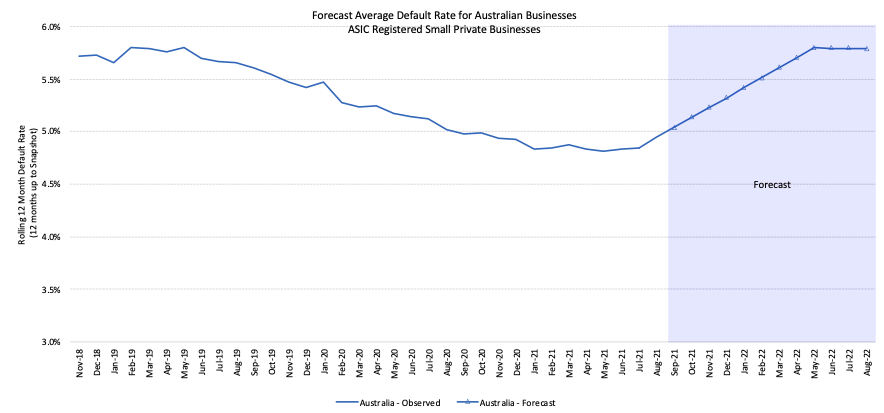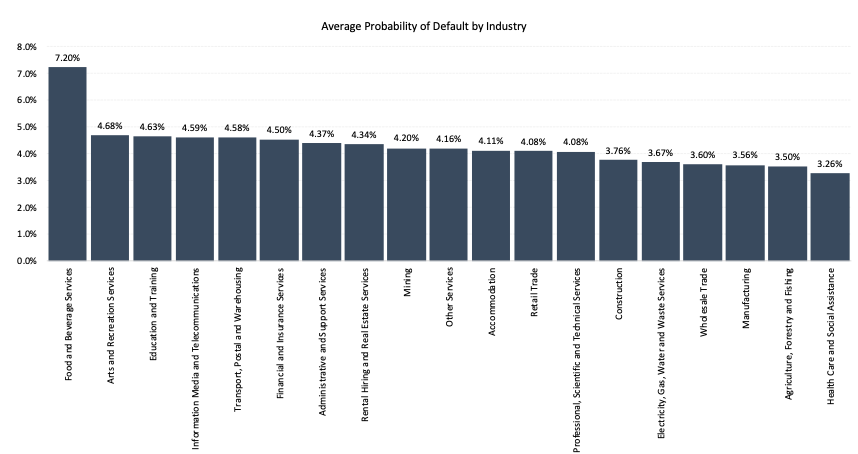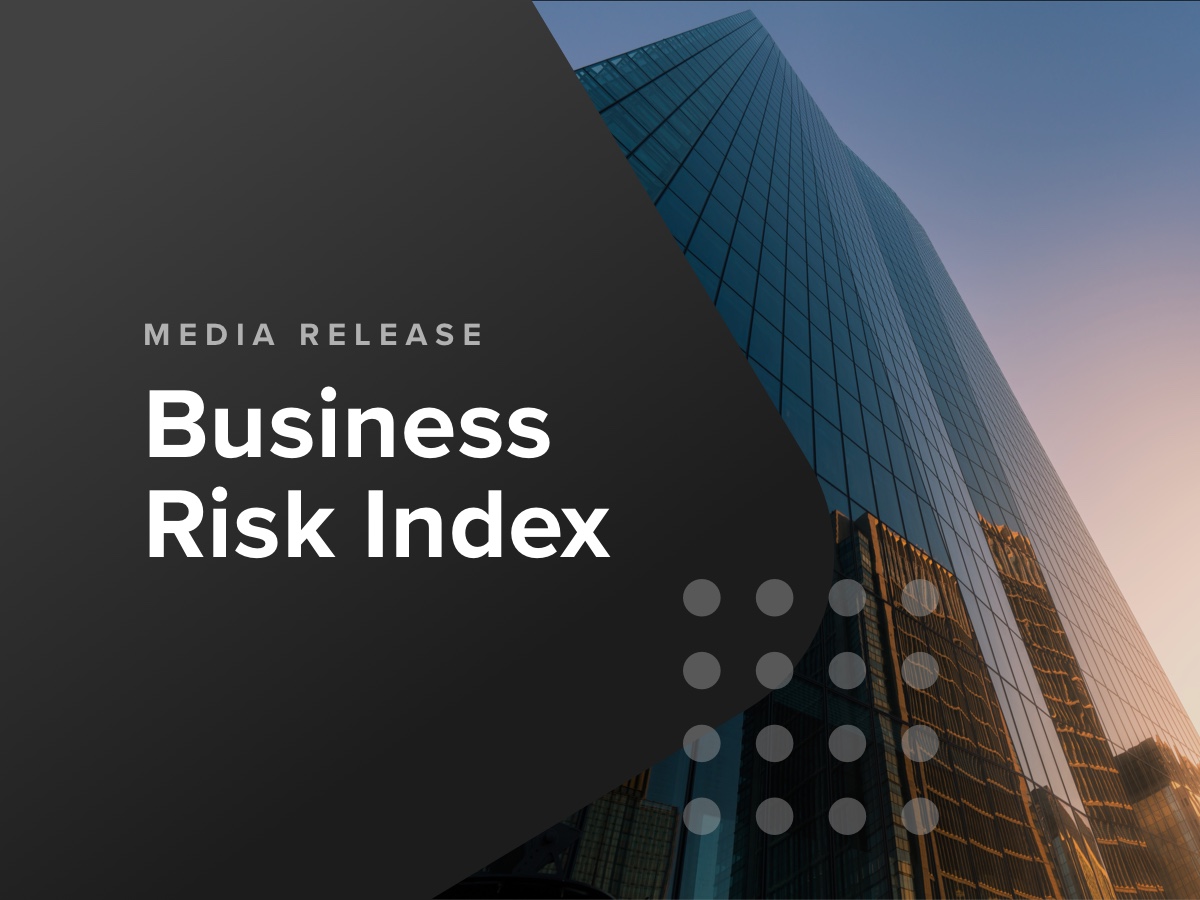
SYDNEY, Wednesday 14 September – The August 2022 CreditorWatch Business Risk Index (BRI) has revealed that trade payment defaults have surged to their highest point since October 2020. Payment defaults are now up a massive 53 per cent year-on-year.
Court actions, another key indicator of business insolvency, also continue to rise – up 51 per cent year-on-year.
While external administrations were down nine per cent from July to August, they remain up 58 per cent year-on-year and 129 per cent since January.
CreditorWatch continues to forecast a rise in business insolvencies due to multiple impacts battering the economy such as high inflation, rising interest rates, labour shortages and supply chain disruptions.
On the positive side, trade receivables (the average value of invoices) are at their second highest point since June 2021, and up 11% year-on-year, however, we note NSW and Victoria were heavily impacted by lockdowns in August 2021.
Key Business Risk Index insights for August:
- Our data continues to give us strong leading indicators that more small businesses are falling into distress.
- Trade payment defaults are surging – up a 53 per cent year-on-year.
- Court actions are up 51 per cent year-on-year and will continue to rise as the ATO ramps up legal actions.
- External administrations were down nine per cent from July to August, but are up 58 per cent year-on-year and 129 per cent since January.
- Average trade receivables are at their second highest point since June 2021 and up 11% year-on-year.
- The Business Risk Index national default rate remained flat at 5.8 per cent in August.
- CreditorWatch continues to forecast a rise in business insolvencies across 2022 as multiple adverse impacts continue to batter the economy.
- Cottesloe-Claremont is WA is the lowest insolvency risk region with greater than 5,000 businesses, followed by Adelaide City.
- The Western Sydney regions of Merrylands–Guildford and Canterbury are the highest risk regions in the country with greater than 5,000 businesses.
Source: CreditorWatch trade receivables data (accounting software integration)
CreditorWatch CEO Patrick Coghlan says rising payment defaults is a disturbing trend but not unexpected.
“Our Business Risk Index data has been forecasting a rise in B2B payment defaults for some time now,” he says.
“The multiple challenges confronting many businesses, whether they be rising inflation and interest rates, labour shortages or the ongoing impacts of the COVID-19 pandemic, are all conspiring to make it that much tougher to pay invoices.”
According to CreditorWatch Chief Economist Anneke Thompson, the recent increases In the cash rate target are still yet to be fully felt by mortgage holders and businesses.
“The financial Impact of monetary policy tightening does take some time to be felt in the repayments schedule of mortgage and business loan holders,” she says.
“We expect that the real pressure will start to mount by October/November, right before the Christmas shopping period. The RBA will be watching consumer spending patterns intently over this time to gauge any change in the behaviour of consumers.”
Small business default forecast
Small businesses are generally the least able to handle Increases in Interest rates and other rising costs, as margins tend to be thin, and cash reserves low. Also, based on our data, small businesses are usually most susceptible to their invoices being paid late, putting further pressure on cash flow.
Source: CreditorWatch Business Risk Index – Business defaults defined as entering external administration or strike-off.
Probability of default by region – areas to watch over the next 12 months
The five regions* at least risk of default over the next 12 months are:
1. Cottesloe-Claremont (WA): 4.91 per cent |
2. Adelaide City (SA): 4.93 per cent |
3. Yarra Ranges (VIC): 4.93 per cent |
4. Ku-ring-gai (NSW): 5.00 per cent |
5. Geelong (VIC): 5.04 per cent |
The five regions* most at risk of default over the next 12 months are:
1. Merrylands-Guildford (NSW): 7.78 per cent |
2. Canterbury (NSW): 7.52 per cent |
3. Surfers Paradise (QLD): 7.46 per cent |
4. Auburn (NSW): 7.41 per cent |
5. Ormeau-Oxenford (QLD): 7.38 per cent |
* Regions with more than 5,000 registered businesses
South-East Queensland and Western Sydney continue to rank among the regions with the highest probability of business defaults. This is because there are higher than average rates of personal insolvencies in these areas, and lower than average incomes.
The areas with low probability of default are more varied, with no clear pattern among them. However, they mostly are low density locations, with higher than average personal incomes.
Probability of default by industry
The industries with the highest probability of default over the next 12 months are:
- Food and Beverage Services: 7.20 per cent
- Arts and Recreation Services: 4.68 per cent
- Education and Training: 4.63 per cent
The industries that are most at risk of default continue to be those where consumers can quickly withdraw spending. The education and training sector Is highly dependent on offshore students for revenue, making it more risky.
The industries with the lowest probability of default over the next 12 months are:
- Health Care and Social Assistance: 3.26 per cent
- Agriculture, Forestry and Fishing: 3.50 per cent
- Manufacturing: 3.56 per cent
These industries will continue to see strong demand, even In the event of lower overall consumer demand, given the essential nature of the goods and services they produce. We note that manufacturing bears some downside risk due to the outlook for energy price increases, particularly gas.
Source: CreditorWatch Business Risk Index
Outlook
Our data continues to give us strong leading indicators that more small businesses are falling into distress. One of the first signs of this is businesses defaulting against another due to non-payment.
The rise in these numbers is much faster than the increase in trade receivables, therefore cannot be attributed to increased turnover. We expect that external administrations and court actions will see trend growth going forward.
-ENDS-
Contacts
Mitchy Koper
GM Communications and Marketing, CreditorWatch
mitchy.koper@creditorwatch.com.au
0417 771 778
Laura Sanford
Senior Account Director, Herd MSL
laura.sanford@herdmsl.com.au
0455 145 164
ABOUT THE BUSINESS RISK INDEX
The Business Risk Index is a predictive economic indicator to help guide businesses when making future growth plans and inform public policy. It is a new credit rating that ranks more than 300 Australian geographies by relative insolvency risk, providing unique insights into the health of Australian businesses by region.
Each region is ranked from best to worst in terms of the potential for businesses in it to become insolvent. The index can also measure the potential for insolvency risk at a national, state and individual business level.
Regions are ranked on a scale from zero to 100, where 100 represents the best credit quality regions, that is, the lowest risk of insolvency, and zero represents the weakest credit quality regions, that is, the highest insolvency risk.
The index is calibrated by data from approximately 1.1 million ASIC-registered, credit-active businesses. It combines these insights with CreditorWatch’s proprietary data, previously published as the monthly Business Risk Review.
Subscribe to the Business Risk Index to be the first to receive our monthly updates.

Get started with CreditorWatch today
Take your credit management to the next level with a 14-day free trial.



